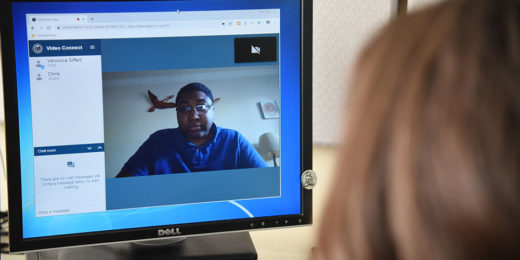Characterized by geographic remoteness and a general scarcity of health care providers, the U.S. rural West is home to many low-income, aging and chronically ill Americans, who struggle disproportionately with opioid addiction, obesity, mental health issues and more.
The burdens of poverty, scant transportation options and a shortage of medical specialists makes getting proper health care next to impossible for some of these folks -- a mounting concern as the COVID-19 pandemic rages on.
Improving the health of people in this region and addressing their struggles to access care are major goals of a collaboration between experts at Stanford Medicine and the Bill Lane Center for the American West. Together, they strive to find ways the American health care system can better serve vulnerable populations in the rural West.
Drawing on a May 2019 interdisciplinary workshop and other avenues of expertise, a new white paper explores the challenges and promise of telehealth solutions.
Low-tech telehealth
The paper provides four recommendations for policymakers to consider: leveraging low-tech telehealth solutions; increasing broadband access; establishing consistent rules for telehealth reimbursement; and finding ways to use data to inform public health decision-making.
For example, because a person's education level often correlates with their health, Lisa Chamberlain, MD, has sought lower-tech ways to encourage children to learn.
The Stanford professor of pediatrics found that sending text messages to parents with basic suggestions, such as teaching children colors while shopping at the grocery store, helped ready young children for kindergarten. When she tried this intervention with Spanish-speaking immigrant communities in San Jose, it improved child literacy levels and was well-received by parents, according to a randomized controlled study.
"That's really leveraging the clinic relationship to help promote the behaviors and give these behavioral nudges for the families ... so that they can help all their children thrive," she said.
Inadequate broadband
Similarly, telehealth programs have offered a solution for people in western communities who live too far away from medical services to reliably benefit from them, said David Meyers, director of a telehealth clinic designed to reach tribal members in Northern Wyoming.
Such programs connecting patients to providers via video calls have succeeded in bringing much-needed diabetes care, surgical follow-up treatment and mental health services to folks who would otherwise have to drive six hours to see a physician in person.
However, it takes reliable broadband to provide these kinds of services; and in much of the rural West, broadband is lacking, despite claims of great progress, the paper notes. Researchers suggest that local communities could benefit from taking control of their own data-gathering to paint a more accurate picture of existing connectivity problems, so that inadequacies can be better addressed.
Consistent reimbursement and harnessing data
But even if telehealth services are available, reimbursement can pose yet another set of obstacles for people in the rural West. In this region, rates and practices are uneven among government and private insurers, and this affects not only what services health care providers offer their patients, but also what the patients can afford.
Programs in Alaska, Arizona, California and other states pay providers generously for video visits, while North Dakota, Utah and Idaho offer limited reimbursement. Only Oregon reimburses for phone and email consultations. This can be remedied, researchers suggest, by mandating consistent reimbursement rules from the government's Medicare and Medicaid programs, and requiring the same from private insurers.
Finally, with all the health data being collected by electronic health records and individuals' own digital devices, the paper recommends that the government and health care providers better harness this information to inform public policy.
Researchers suggest that analytics from machine learning initiatives, genomic screening and digital medical records can be shared and leveraged to identify trends and to pinpoint ways that people's health can be improved.
Photo by Ashim D'Silva






